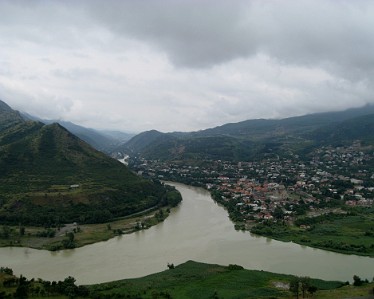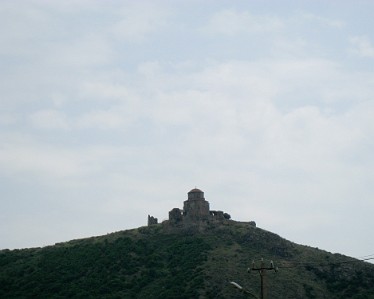Jvari Cathedral
Jvari (St. Cross Monastery) stands on the rocky mountaintop at the confluence of the Mtkvari and Aragvi rivers, overlooking the village of Mtskheta, which was formerly the capital of the Kingdom of Iberia.
According to traditional accounts, on this location in the early 4th century Saint Nino, a female evangelist credited with converting King Mirian III of Iberia to Christianity, erected a large wooden cross on the site of a pagan temple. The cross was reportedly able to work miracles and therefore drew pilgrims from all over Caucasus. A small church was erected over the remnants of the wooden cross in c.545 named the “Small Church of Jvari”.
The present building, or “Great Church of Jvari”, was built between 586 and 605 by Ersimtavari Stepanoz I. The importance of Jvari complex increased over time and attracted many pilgrims. In the late Middle Ages, the complex was fortified by a stone wall and gate, remnants of which still survive.

